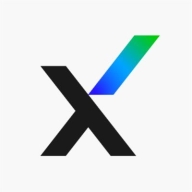

Trellix Endpoint Security and Webroot Business Endpoint Protection are two leading solutions in endpoint security. While Trellix offers advanced analytical features, Webroot stands out for its ease of use.
Features: Trellix Endpoint Security offers comprehensive threat detection, advanced analytics, and detailed reporting. Webroot Business Endpoint Protection is known for its lightweight nature, simple integration, and efficient performance.
Room for Improvement: Trellix Endpoint Security needs to address performance lag, reduce system complexity, and improve user interface. Webroot Business Endpoint Protection should enhance its reporting tools, improve malware detection accuracy, and expand feature sets.
Ease of Deployment and Customer Service: Trellix Endpoint Security has a straightforward deployment process but inconsistent support services. Webroot Business Endpoint Protection is praised for its quick deployment and consistently positive support feedback.
Pricing and ROI: Trellix Endpoint Security has a higher initial setup cost but offers strong ROI through its extensive features. Webroot Business Endpoint Protection is cost-effective with solid ROI, thanks to lower setup costs and effective performance.


Trellix Endpoint Security provides aggressive robust protection for every endpoint in an enterprise organization. Trellix uses dynamic threat intelligence and mounts a superb defense across the complete threat lifecycle. This solution will keep your organization more secure and resistant to any possible threat of risks. Trellix offers an amalgamated suite of next-generation endpoint security tools. These tools give users the benefit of machine learning, intuitive intelligence, and greater assistance to ensure their networks are being protected non-stop against threats - potential or realized - and can stop attacks before they happen. Trellix uses MDR (managed detection and response) and XDR (extended detection and response) to give users a comprehensive endpoint security solution.
Trellix Endpoint Security Benefits
Trellix Endpoint Security Top Features
Reviews from Real Users
“It has a great console. We can manage everything from the central console and it is very easy. Every year we are getting the benefits of legacy also. It's easy to set up.” - S Fazlul H., IT Lead Engineer, Information Technology at Banglalink
“There is a new feature where you can set thresholds for all the CPU consumption allowing for no consumption on the servers when the scans happen. It is a separate plugin or addon, and if we have it on all the virtual machines it automatically checks the resources, and based on that, it will schedule the scans. That is something that I have not seen in other antivirus solutions, such as Symantec.” - Sabari K. Senior Engineer at a comms service provider
Webroot Business Endpoint Protection provides comprehensive endpoint protection, antivirus, and security features across devices like mobiles, computers, and servers to prevent malware and other threats.
Webroot Business Endpoint Protection helps businesses manage endpoint security through its robust cloud application and integrates with RMM tools for improved management and pricing. It offers EMS service, automatic updates, and a lightweight agent, ensuring ease of use and minimal resource consumption across all devices. This solution maintains a cloud-based database for real-time threat recognition and delivers strong performance with low resource usage, leveraging heuristic AI for threat detection. Companies use it for its antivirus, firewall functions, device location and wiping, and security policy applications, contributing to effective security management.
What are the key features?Webroot Business Endpoint Protection is implemented across industries to ensure robust endpoint security. Its integration with RMM tools allows for seamless management in IT environments, while its cloud-based threat detection provides essential cybersecurity for sectors such as healthcare, finance, and education.
We monitor all Endpoint Protection Platform (EPP) reviews to prevent fraudulent reviews and keep review quality high. We do not post reviews by company employees or direct competitors. We validate each review for authenticity via cross-reference with LinkedIn, and personal follow-up with the reviewer when necessary.